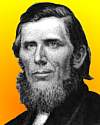
In 1857, a U.S. patent was issued to Ephraim Ball for his mower design, which became the first widely successful of the two-wheeled flexible or hinged bar mowers. This “Ball's Ohio Mower” greatly influenced the change from single driving-wheel machines to those with double drivers. Ball began inventing with a turn-top stove. Then in 1840 he established a foundry for making ploughs. An excerpt on Ephraim Ball from A History of American Manufactures from 1608 to 1860 gives an insight to the development of mechanized agriculture in the farmlands of the United States in the mid-19th century.

On 1 Dec 1866, George Everest died. His name on Mount Everest honours his extraordinary work mapping India. Today's book pick is: The Great Arc: The Dramatic Tale of How India was Mapped and Everest was Named, by John Keay. This captivating story about the Great Trigonometrical Survey of India is steeped in the subcontinent's past, written in an elegant style that brings to life the personalities of the surveyors. Keay covers the science of surveying and the logistics (an army of men, instruments, elephants and horses hauling a half-ton theodolite and braving tiger-infested jungles). Yet George Everest was an irascible martinet, driven by an ego as monumental as Everest. With an eye for intriguing incident and an ear for the telling phrase, one of the finest writers on India vividly resurrects the nineteenth century's most ambitious scientific endeavor.
It is available from Amazon, typically about New from $20.23. Used from $4.49. (As of earlier time of writing - subject to change.)
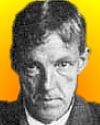 | Archimedes will be remembered when Aeschylus is forgotten, because languages die and mathematical ideas do not. “Immortality” may be a silly word, but probably a mathematician has the best chance of whatever it may mean. |
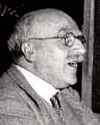 | An attempt to study the evolution of living organisms without reference to cytology would be as futile as an account of stellar evolution which ignored spectroscopy. |
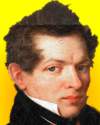 | There is no branch of mathematics, however abstract, which may not some day be applied to phenomena of the real world. |
| Before you look at today's web page, see if you can answer some of these questions about the events that happened on this day. Some of the names are very familiar. Others will likely stump you. Tickle your curiosity with these questions, then check your answers on today's web page. | |
| Births | |
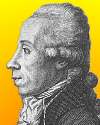 | Martin Heinrich Klaproth, born 1 Dec 1743, was a German chemist who was one of the founders of analytical chemistry. He discovered zirconium and another now well-known element in 1789, and cerium (1803), and contributed to the identification of others. He described them as distinct elements, though he did not obtain them in the pure metallic state. He was Europe's leading analytical chemist. A significant contribution was his insistence on accepting the importance of reporting "small" losses and What was the other, heavy element he discovered in 1789? |
| Deaths | |
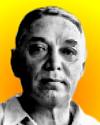 | Anthropologist Sir Peter Buck (1879-1951) originally was named Te Rangi Hiroa a the son of a Maori chiefess. He practised medicine, was a member of parliament and served in WW I. After becoming an anthropologist, he joined the Bishop Museum in Honolulu, Hawaii, and later was its director from 1936 until his death. In what country do the Maori live? |
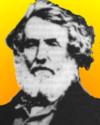 | Sir George Everest (1790-1866) is remembered by the mountain named in his honour, recognising his 25 years of dedication to the task of making an accurate survey of the Indian subcontinent. In what country was he born? |
| Events | |
 | On 1 Dec of a certain year, British and French workers digging the Channel Tunnel between their countries finally met in the service tunnel after knocking out a passage large enough to walk through and shake hands. The United Kingdom and France were now linked for the first time in 8,000 years. In which decade was this link first made? |
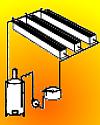 | On 1 Dec 1936, the first U.S. patent was issued for a method of growing plants in a large commercial hydroponicum. The related word “hydropontics” was coined in the early 1930s, by Professor Gericke at U.C.L.A. How are plants grown by this method? |
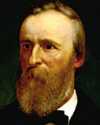 | On 1 Dec 1878, the White House, Washington, DC, had its first telephone installed by Alexander Graham Bell himself. It is reported that the president's first outgoing call went to Bell, thirteen miles away. His first words instructed Bell to speak more slowly. Which president used the first White House telephone? |
Fast answers for the previous newsletter for November 30: AGA stove • penicillin • insulin • vanadium • decade containing the year 1858 • balloon flight.
 If you enjoy this newsletter, the website, or wish to offer encouragement or ideas, please send feedback by using your mail reader Reply button.
If you enjoy this newsletter, the website, or wish to offer encouragement or ideas, please send feedback by using your mail reader Reply button. Your click on a Facebook, StumbleUpon, or other social button on the site webpages is also a welcome sign of appreciation. Thank you for using them.
© This newsletter is copyright 2019 by todayinsci.com. Please respect the Webmaster's wishes and do not put copies online of the Newsletter — or any Today in Science History webpage. (If you already have done so, please remove them. Thank you.) Offline use in education is encouraged such as a printout on a bulletin board, or projected for classroom viewing. Online, descriptive links to our pages are welcomed, as these will provide a reader with the most recent revisions, additions and/or corrections of a webpage. For any other copyright questions, please contact the Webmaster by using your mail reader Reply button.
--
If you do not want to receive any more newsletters, Unsubscribe
To update your preferences and to unsubscribe visit this link
Executive Real Estate Business Class
-
"It was like a man with wings. It wasn't like anything you'd see on TV or in a monster movie." ...
-
55 Creepy Photos From The Darkest Recesses Of Human History From the Fre...
-
This has to be the world worst election malpractice in the history of democracy where one vote equal 19. Chief Obafemi Awolowo (a lawy...
About the publisher
Search This Blog
Blog Archive
-
▼
2020
(1542)
-
▼
December
(121)
- On This Day for December 31 - Ottawa made capital ...
- Newsletter for Thursday 31 December.
- December 31: The Battle of Quebec, a Rainy Day in ...
- All That's Interesting's 10 Most Popular Stories O...
- On This Day for December 30 - Union of Soviet Soci...
- Newsletter for Wednesday 30 December.
- December 30: Creation of the USSR, the All India M...
- Know Better in 2021
- On This Day for December 29 - U.S. annexation of T...
- Newsletter for Tuesday 29 December.
- December 29: On This Day in History
- The Best of HISTORY This Week
- The 10 Best History Uncovered Articles Of 2020
- On This Day for December 28 - Westminster Abbey op...
- Newsletter for Monday 28 December.
- December 28: Galileo Observes Neptune, Harriet Tub...
- The death of Thomas Becket | The history of New Year
- On This Day for December 27 - Dutch transfer of In...
- Newsletter for Sunday 27 December.
- December 27: On This Day in History
- On This Day for December 26 - Indian Ocean tsunami...
- Newsletter for Saturday 26 December.
- December 26: 1st Spanish Settlement in the New Wor...
- The Anti-Santa Who Takes Naughty Kids To Hell, The...
- On This Day for December 25 - Christmas celebrated...
- Newsletter for Friday 25 December.
- December 25: Andrew Johnson's Christmas Pardon, Ce...
- On This Day for December 24 - Treaty of Ghent, Joh...
- Newsletter for Thursday 24 December.
- December 24: The Treaty of Ghent, Author Stephenie...
- Demystified Video: Why Is Christmas in December?
- On This Day for December 23 - Aleksander Kwaśniews...
- December 23: Van Gogh's Madness, the Partition of ...
- On This Day for December 22 - Alfred Dreyfus sente...
- Newsletter for Tuesday 22 December.
- December 22: An Impenetrable Fortress Falls, the 1...
- On This Day for December 21 - Radium discovered by...
- December 21: The Soviet Union Ends, Life in the Tr...
- A history of Christmas – from Oliver Cromwell to V...
- On This Day for December 20 - Macau made an admini...
- Newsletter for Sunday 20 December.
- December 20: US Buys Louisiana, the Viet Cong and ...
- On This Day for December 19 - Articles of impeachm...
- Newsletter for Saturday 19 December.
- December 19: On This Day in History
- The Soviet Executioner Who Killed 7,000 Poles One ...
- On This Day for December 18 - Slavery abolished in...
- Newsletter for Friday 18 December.
- December 18: The Yuan Dynasty Begins, Nuclear Powe...
- The perfect gifts for the curious kids in your lives!
- On This Day for December 17 - Flight of the Wright...
- Newsletter for Thursday 17 December.
- December 17: Tamerlane Sacks Delhi, the Wright Bro...
- Demystified: Do We Really Use Only 10 Percent of O...
- On This Day for December 16 - Boston Tea Party, Ja...
- Newsletter for Wednesday 16 December.
- December 16: A Boston Tea Party, the Battle of the...
- Haunting Kennedy Assassination Photos That Most Pe...
- On This Day for December 15 - Premiere of Gone wit...
- Newsletter for Tuesday 15 December.
- December 15: Vandals, Mongols and the US Bill of R...
- On This Day for December 14 - Roald Amundsen's arr...
- Newsletter for Monday 14 December.
- December 14: Amundsen and Scott's Epic Race to the...
- On This Day for December 13 - New Zealand sighted,...
- Newsletter for Sunday 13 December.
- On This Day for December 12 - U.S. Supreme Court d...
- December 12: A Generous Manhattan Gift, Bush v. Go...
- How eels powered the medieval economy | The histor...
- 55 Of History's Creepiest Pictures And Their Distu...
- On This Day for December 11 - Abdication of King E...
- Newsletter for Friday 11 December.
- December 11: The Mayflower Pilgrims, an Abdication...
- UPDATED: Britannica Year in Review: Story of the Year
- Britannica Year in Review: Story of the Year
- On This Day for December 10 - Encyclopædia Britann...
- Newsletter for Thursday 10 December.
- December 10: Spanish-American War, Edward VIII and...
- Laurence Fishburne Hosts a New HISTORY Digital Series
- Demystified: What's the Difference Between Whiskey...
- On This Day for December 9 - Lech Wałęsa elected p...
- Newsletter for Wednesday 9 December.
- December 9: Belisarius Enters Rome, Lech Wałęsa El...
- What will you discover this Thursday?
- On This Day for December 8 - John Lennon fatally s...
- Newsletter for Tuesday 8 December.
- December 8: Lincoln's Amnesty Proclamation, the US...
- On This Day for December 7 - Pearl Harbor attack, ...
- Newsletter for Monday 7 December.
- December 7: Birth of Plastics, Infamy in Pearl Har...
- History books of the year | Historical board games...
- On This Day for December 6 - Irish Free State esta...
- Newsletter for Sunday 6 December.
- December 6: Mongols Destroy Kiev, Slavery Abolishe...
- On This Day for December 5 - Witchcraft condemned ...
- Newsletter for Saturday 5 December.
- December 5: Gold Rush in California, End of Prohib...
- HNN Newsletter: You are now unsubscribed
- 10 Medieval Execution Methods That Are The Definit...
- On This Day for December 4 - Ivan the Terrible pro...
-
▼
December
(121)
-
Blogroll
-
About
HistoryFact











0 comments:
Post a Comment